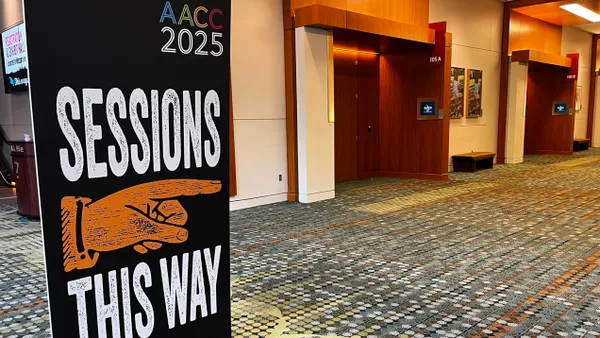Dive Brief:
- Delays and technical glitches during the rollout of the updated Free Application for Federal Student Aid caused challenges and stress for many families seeking financial aid, a new survey from Sallie Mae and Ipsos found.
- Just 29% of polled families found the updated form easier to complete than the older version. Yet respondents indicated that financial aid matters when selecting where to enroll, with 36% of students saying the scholarships and financial aid they receive play a role in their ultimate decision.
- “That confusion, those delays had an impact on students and families,” said Rick Castellano, vice president of corporate communications at Sallie Mae. “Those who are disproportionately hurt the most are those who would probably be most eligible for support.”
Dive Insight:
Despite the high sticker price of college, the survey of 1,000 undergraduate students and 1,000 parents, conducted from April 8 to May 14, suggested that families still believe in the value of higher education.
Among respondents, 88% agreed that college is still an investment in a student’s future and 86% said they believe earning a degree will create opportunities they wouldn’t be able to reach otherwise.
And they’re willing to shell out big money for higher education. In the survey, 79% of students and parents said they’d stretch themselves financially to get those opportunities.
But the cost of attending is still a big factor, as many look at the price of attending a college and the amount they will receive in scholarships and financial aid when deciding where they would like to attend.
Moreover, sticker shock is common, Castellano said, even when the cost of attending is actually less than advertised.
Families need “more clarity around the cost of college, greater transparency in federal lending programs, especially in borrowing," said Castellano. Families and students also need to be better connected “to scholarships and grants to make sure they are accessing free money first, before borrowing,” he added.
The botched FAFSA rollout did not help the situation. Thirty-eight percent found older versions of the FAFSA form easier to complete, while 33% found no difference in the amount of effort needed to complete them.
The issues have taken a toll.
Nearly half of families who filled out 2024-2025 FAFSA forms reported experiencing delays in receiving a financial aid offer from their higher ed institution. Among those who experienced a delay, 44% reported feeling stress from waiting for the aid decision, 30% reached out to the college for additional information, and 14% considered attending a lower cost institution.
It also forced many families to explore higher ed financing options beyond the FAFSA: 26% looked for other scholarship opportunities and 21% sought additional financial aid options.
And for some, the delays prompted students to rethink their current pursuit of higher education: 11% considered leaving college or taking a break. Nine percent actually did leave higher education or take a break.
Further delays are anticipated during the next academic year. The U.S. Department of Education announced earlier this month that FAFSA forms for the 2025- 2026 academic year won’t be fully available until Dec. 1.












